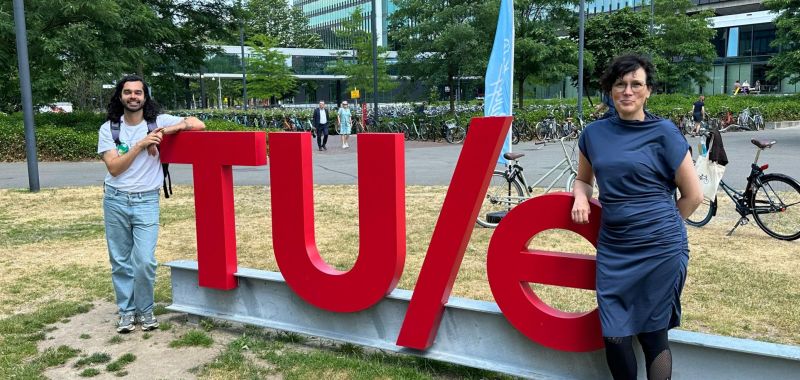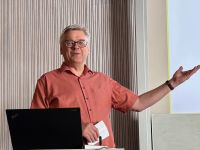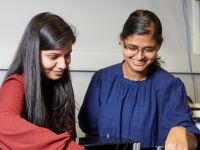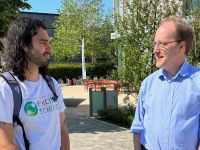
Member profile: Angèle Reinders
As a Professor in Design of Sustainable Energy Systems at Eindhoven University of Technology, Exciton Science Associate Investigator Angèle Reinders is seeking to make a world powered by photovoltaics and other renewables a practical reality.
Many members of Exciton Science specialise in fundamental and enabling research, ranging from spectroscopy to nanomaterials, while others are in engaged in developing prototypes and other new devices.
But none of this important work will have the desired impact without a coherent strategy to integrate new technology into the built environment. That’s where Angèle, who is also the Director of the Solliance Solar Research organisation, comes in.
“My research is about how to better design energy systems,” she said.
“Not only in the sense of how you apply the design, but also in the sense of optimising technology. My main focus is on photovoltaics and other future solar technologies."
As a researcher, lecturer and popular author, Angèle is a high-profile and highly respected figure in her field. But it was simple curiosity and a thirst for knowledge that drove her to enter and excel in academia.
“I never aimed at an academic career, but I always did what I liked to do,” he said.
“From childhood onwards, I was really interested in the sun, in natural sciences and in creating things. I merged all that and through the choices I made in my education, and in my early career, I became more and more specialised in the field of photovoltaics, solar energy, and design. And that all comes together in what I'm doing now.”
Understanding the photovoltaic effect alone wasn’t enough for Angèle, who quickly realised a wholistic approach was necessary to try and make a real impact in the race to reach net zero.
“I got interested in systems thinking and at that moment in my career, I realised that a systems approach is not enough, there's also users [to consider],” she said.
“There’s also economics and issues related to the aesthetics and the appearance of technologies in integration, in buildings and in our environment. And that's how I got interested in adding the design factor to all this.
“For a long time, this was considered to be a less useful approach. But you see clearly now in the energy domain that the design aspect has become more and more important. That’s true of solar applications, like solar concentrators, but also all the things you can do with photovoltaics coatings and patterning, and how it fits into buildings and in our landscapes. It becomes more and more important because the share of solar energy is increasing.
“As solar energy infrastructure becomes more visible and you have to use all the available space, you also have to think about how to integrate technology while at the same time ensuring functionality. And that's super important, creating highly efficient solar devices and thinking about future solar conversion mechanisms.”
Fittingly for a researcher with a grasp on the whole picture of renewable energy, building design and urban planning, one of Angèle’s biggest priorities is enabling effective collaboration.
“I think the most challenging part of my work is connecting everyone,” she said.
“Because if you consider the integration of energy technologies in things that already exist or in new products or new buildings, then any project that you start has an interdisciplinary scope, not only from the content perspective, but also from the stakeholders involved.
“It's not only about science, it's also about involving the architect, the safety officers, the city planner. Maybe also the metallurgist. There's many parties involved. In the end you have to produce it and manufacture and install it.
“So you can imagine there's this whole ecosystem of parties with different objectives and different ways of working, and they all have to come together to realise this solar energy future.”
The battle to avoid climate catastrophe is still in the balance, and cause for optimism is not always apparent. But with the passion and dedication of researchers like Angèle at our disposal, we still have plenty of reason for hope.







